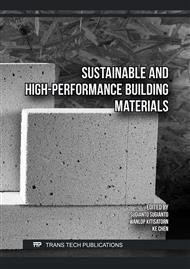p.3
p.13
p.19
p.27
p.35
p.45
p.53
p.65
Performance of Using Geocell for Slope Erosion Control Compared in Different Geocell Installing Areas
Abstract:
The erosion problem is an issue environment, that decreases the fertility of soil surface, causing damage to farmers or on various slopes. Erosion leads to soil deposition and long-term changes in topography. This study investigates and compares the performance of geocell erosion control systems across different installation areas. The erosion experiment test under various conditions, the different geocell-installed areas, the three rainfall intensities, and the three slope gradients. The erosion characteristics were tested in a laboratory erosion flume model. The investigation shows the erosion control process of the geocell wall blocks the surface runoff flow and sediment. Geocell installation reduces runoff energy, distributes water mass, and helps retain soil particles. This study shows the performance of geocell-installed on erosion control, the cell wall of geocell reduces the flow energy and the water mass to smaller, which can decrease the erosion damage in the geocell-installed area or areas below slopes. The sediment reduction ratio of the fully geocell-installed flume test was 84% and decreased by approximately 10% with every 20% reduction in the geocell installation area.
Info:
Periodical:
Pages:
13-18
Citation:
Online since:
December 2024
Keywords:
Price:
Сopyright:
© 2024 Trans Tech Publications Ltd. All Rights Reserved
Share:
Citation:



